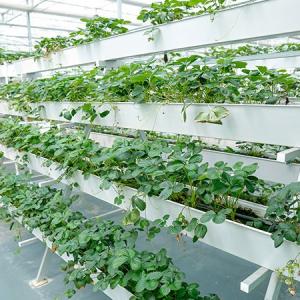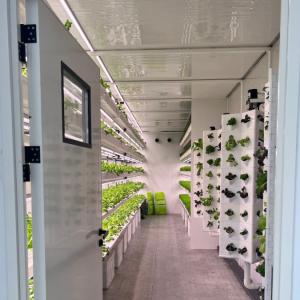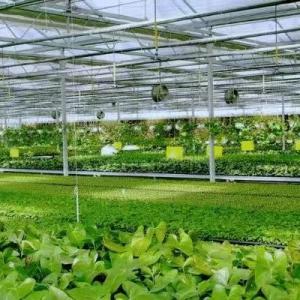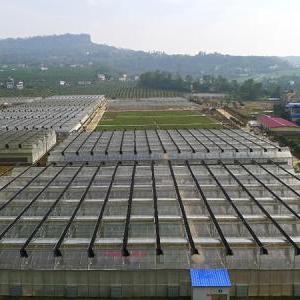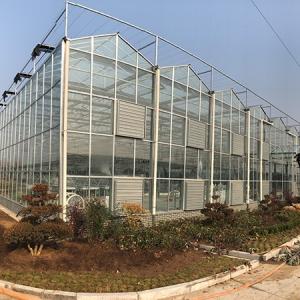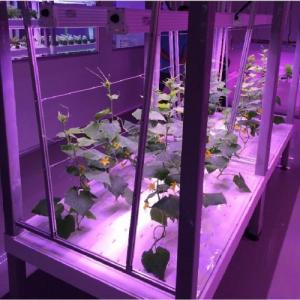Oman Agriculture Overview
This article will delve into the current state of the industry, highlighting its growth potential and significance within Oman's agricultural sector. By examining key factors such as market size, technological advancements, and government support, we aim to offer a comprehensive understanding of the opportunities and challenges present in the commercial greenhouse industry in Oman.
The Growth Trajectory of Oman's Greenhouse Industry
Oman's greenhouse industry has experienced a remarkable growth trajectory in recent years. The demand for fresh and locally grown produce has been a driving force behind the expansion of the commercial greenhouse sector. With favorable climatic conditions and an increasing emphasis on sustainable agriculture, the industry has flourished, contributing significantly to Oman's agricultural landscape.
Market Size and Potential
The commercial greenhouse industry in Oman has witnessed significant growth, both in terms of market size and potential. The sector has attracted substantial investments, leading to the establishment of modern and technologically advanced greenhouse facilities. This has resulted in increased production capacity and a diverse range of crops being cultivated throughout the year. The market size continues to expand, driven by rising consumer demand for locally sourced, high-quality produce.
Technological Advancements in Greenhouse Farming
Technological advancements have revolutionized greenhouse farming in Oman. From advanced climate control systems to automated irrigation and fertilization methods, innovative technologies have enhanced productivity and efficiency in greenhouse operations. The integration of smart sensors, data analytics, and precision farming techniques has further optimized resource utilization, minimizing waste and environmental impact. These technological advancements have propelled the commercial greenhouse industry to new heights of productivity and sustainability.
Government Support and Initiatives
The Omani government has recognized the importance of the commercial greenhouse industry and has implemented various supportive measures and initiatives. These include financial incentives, grants, and subsidies to encourage investments in greenhouse farming. Additionally, the government has facilitated knowledge sharing and training programs to equip farmers with the necessary skills and expertise in greenhouse operations. Such support and initiatives have created a conducive environment for the growth and development of the commercial greenhouse industry in Oman.

Challenges and Future Outlook
While Oman's commercial greenhouse industry holds immense potential, it also faces certain challenges. Limited availability of skilled labor, fluctuating market prices, and the need for continuous innovation are among the key challenges confronting the industry. However, with the right strategies and ongoing advancements in technology, these challenges can be overcome. The future outlook for Oman's commercial greenhouse industry remains positive, with opportunities for expansion, diversification, and increased profitability.
Oman's commercial greenhouse industry is witnessing significant growth and contributing to the country's agricultural sector. With favorable market conditions, technological advancements, and government support, the industry is poised for a promising future. By embracing innovation and addressing challenges, the commercial greenhouse industry in Oman can continue to thrive and play a vital role in ensuring a sustainable and resilient food production system.
Advantages of Greenhouse Farming in Oman
Greenhouse farming in Oman offers numerous advantages that contribute to the industry's growth and potential. This section will explore these benefits in detail, focusing on aspects such as climate control, extended growing seasons, water conservation, and protection against pests and diseases. By harnessing advanced greenhouse technologies, Omani farmers can optimize their crop production, enhance yield, and mitigate risks associated with unpredictable weather conditions. We will discuss how these advantages position Oman as an attractive destination for greenhouse farming ventures.
Precise Climate Control for Optimal Crop Growth
One of the significant advantages of greenhouse farming in Oman is the ability to exercise precise climate control. Greenhouses provide an enclosed environment where temperature, humidity, and light can be carefully regulated to create optimal growing conditions for crops. This control allows farmers to cultivate a wide range of plants throughout the year, irrespective of the external weather conditions. By tailoring the climate to the specific needs of each crop, farmers can achieve higher yields and ensure consistent quality.
Extended Growing Seasons and Year-Round Production
Greenhouses in Oman offer extended growing seasons, enabling year-round production of crops. The controlled environment inside the greenhouse allows farmers to overcome the limitations of traditional outdoor farming, such as seasonal changes, extreme temperatures, and harsh weather conditions. By providing a stable and favorable climate, greenhouse farming extends the productive period, allowing farmers to cultivate crops even during off-seasons. This extended growing capability enhances the supply of fresh produce throughout the year, meeting the demands of consumers and creating a consistent market presence.
Efficient Water Conservation and Resource Management
Greenhouse farming in Oman promotes efficient water conservation and resource management. Through the implementation of advanced irrigation systems and water-saving techniques, such as drip irrigation and hydroponics, farmers can significantly reduce water consumption compared to traditional farming methods. The controlled environment inside the greenhouse minimizes water loss through evaporation, and the precise application of water directly to the plants' root zones ensures optimal absorption. This efficient water management not only conserves a valuable resource but also reduces operating costs for farmers.
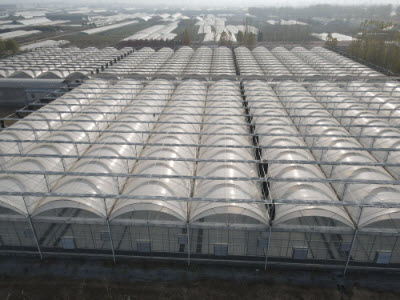
Protection against Pests and Diseases
Greenhouses provide a protective shield against pests and diseases, offering an advantage over open-field farming. The enclosed environment of a greenhouse acts as a physical barrier, preventing pests, insects, and pathogens from directly accessing the crops. Additionally, strict control measures, such as the implementation of integrated pest management (IPM) techniques and regular monitoring, help detect and address any potential pest or disease outbreaks promptly. This proactive approach to crop protection reduces the reliance on chemical pesticides, creating a safer and healthier produce for consumers.
Mitigation of Weather-Related Risks
Unpredictable weather conditions pose a significant risk to traditional farming practices. Greenhouse farming in Oman mitigates these risks by providing a controlled environment that shields crops from adverse weather events such as storms, heavy rains, extreme temperatures, or excessive sunlight. By reducing the vulnerability of crops to weather-related risks, greenhouse farmers can ensure a more stable and reliable harvest, safeguarding their investments and livelihoods.
Greenhouse farming in Oman offers a multitude of advantages that contribute to the industry's growth and potential. The precise climate control, extended growing seasons, efficient water conservation, protection against pests and diseases, and mitigation of weather-related risks position Oman as an attractive destination for greenhouse farming ventures.
Market Trends and Opportunities in Oman's Greenhouse Industry
Understanding market trends and identifying opportunities are crucial for success in Oman's greenhouse industry. This section will highlight the latest market trends, including the growing demand for locally grown produce, the rise of organic farming, and the increasing popularity of niche crops. By exploring these trends, we aim to guide potential investors and entrepreneurs towards lucrative opportunities within Oman's greenhouse market. We will also provide insights into emerging crops that exhibit high market potential, such as exotic fruits, specialty herbs, and high-value flowers.
Growing Demand for Locally Grown Produce
There is a noticeable shift in consumer preferences towards locally grown produce in Oman. As people become more health-conscious and environmentally aware, the demand for fresh, pesticide-free, and sustainably grown food is on the rise. Greenhouse farming offers the advantage of year-round production and the ability to supply locally grown fruits, vegetables, and herbs. By catering to this growing demand, greenhouse farmers can tap into a receptive market and establish strong relationships with local retailers, restaurants, and consumers.
Rise of Organic Farming in Greenhouses
Organic farming practices are gaining momentum in Oman's greenhouse industry. Consumers are increasingly seeking organic products that are free from chemical fertilizers and pesticides. Greenhouse farming provides an ideal environment for implementing organic cultivation methods, as it allows for better control over inputs and reduces the risk of contamination. By adopting organic farming practices, greenhouse farmers can capitalize on the growing market for organic produce, commanding premium prices and attracting health-conscious consumers.
Increasing Popularity of Niche Crops
The greenhouse industry in Oman is witnessing a surge in the cultivation of niche crops. These crops include exotic fruits, specialty herbs, and high-value flowers that cater to specific market segments. Niche crops offer unique flavors, aromas, or aesthetic appeal, making them sought-after by gourmet chefs, upscale retailers, and floral designers. Greenhouse farmers who diversify into growing niche crops can tap into niche markets, where they have a competitive edge and the potential for higher profit margins.

Emerging Crops with High Market Potential
Several emerging crops in Oman's greenhouse industry exhibit high market potential. Exotic fruits such as dragon fruit, passion fruit, and pomegranate are gaining popularity due to their nutritional benefits and unique flavors. Specialty herbs like basil, mint, and oregano are sought after by the culinary industry and health-conscious consumers. High-value flowers such as roses, orchids, and lilies are in demand for special occasions and floral arrangements. By exploring these emerging crops, greenhouse farmers can capitalize on evolving consumer preferences and tap into niche markets with significant growth potential.
In conclusion, Oman's greenhouse industry presents promising market trends and lucrative opportunities. The growing demand for locally grown produce, the rise of organic farming, and the increasing popularity of niche crops offer avenues for success. By staying abreast of market trends and exploring emerging crops with high market potential, entrepreneurs and investors can make informed decisions to thrive in Oman's greenhouse market. The industry's dynamic nature and evolving consumer preferences create a fertile ground for innovation, profitability, and sustainable agricultural practices.
Technological Innovations Driving Oman's Greenhouse Sector
Technological innovations play a pivotal role in driving the growth and efficiency of Oman's greenhouse sector. In this section, we will discuss the cutting-edge solutions and advancements that have revolutionized greenhouse farming practices. Topics to be covered include automated climate control systems, precision irrigation techniques, remote monitoring and control, and data-driven farming approaches. By embracing these innovations, Omani greenhouse farmers can optimize resource utilization, improve productivity, and reduce environmental impact, ultimately enhancing their competitiveness in the global market.
Automated Climate Control Systems
Automated climate control systems have transformed the way greenhouses are managed in Oman. These advanced systems utilize sensors, actuators, and computer algorithms to monitor and adjust key environmental factors such as temperature, humidity, ventilation, and CO2 levels. The automation of these processes ensures precise control over the greenhouse climate, creating optimal growing conditions for different crops. By maintaining consistent and favorable environments, automated climate control systems enhance crop quality, accelerate growth, and minimize the risk of pests and diseases.
Precision Irrigation Techniques
Precision irrigation techniques have significantly improved water management in Oman's greenhouse sector. These techniques, such as drip irrigation and hydroponics, deliver water and nutrients directly to the plant roots in precise quantities. By avoiding water wastage through evaporation or runoff, precision irrigation optimizes water usage and conserves this valuable resource. Additionally, these techniques enable farmers to tailor irrigation schedules and nutrient delivery based on specific crop requirements, further enhancing plant health, growth, and yield.
Remote Monitoring and Control
Remote monitoring and control systems have empowered greenhouse farmers in Oman with real-time visibility and control over their operations. Through the use of sensors, cameras, and internet-connected devices, farmers can remotely monitor crucial parameters such as temperature, humidity, soil moisture, and crop health. This remote access allows for proactive decision-making, early detection of issues, and immediate adjustments to optimize growing conditions. Remote monitoring and control systems enable farmers to manage multiple greenhouse facilities efficiently and make data-driven decisions regardless of their physical location.
Data-Driven Farming Approaches
Data-driven farming approaches, facilitated by digital technologies, are transforming Oman's greenhouse sector. Farmers now have access to a wealth of data collected from sensors, weather stations, and crop monitoring systems. By leveraging this data and utilizing analytics tools, farmers can gain valuable insights into crop performance, growth patterns, resource utilization, and environmental conditions. These insights enable informed decision-making, precise crop management, and continuous improvement. Data-driven farming approaches optimize production processes, enhance resource efficiency, and support sustainable agricultural practices.
In conclusion, technological innovations are revolutionizing Oman's greenhouse sector, driving growth, and improving efficiency. Automated climate control systems, precision irrigation techniques, remote monitoring and control, and data-driven farming approaches are empowering Omani greenhouse farmers to optimize resource utilization, improve productivity, and reduce environmental impact. By embracing these innovative solutions, Omani greenhouse farmers can stay competitive in the global market, meet the demands of consumers, and contribute to a sustainable and resilient agricultural industry.
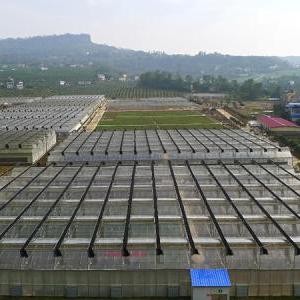
Government Initiatives and Support for the Greenhouse Industry
The Omani government recognizes the importance of the greenhouse industry and has implemented various initiatives to support its growth. In this section, we will shed light on the government's role in fostering the development of the greenhouse sector through policies, incentives, and funding programs. We will discuss initiatives aimed at promoting research and development, providing financial assistance to farmers, facilitating technology adoption, and promoting sustainable practices. By highlighting these government efforts, we aim to showcase the commitment to nurturing a thriving and sustainable greenhouse industry in Oman.
Future Prospects and Challenges for Oman's Greenhouse Industry
Looking ahead, Oman's greenhouse industry presents promising prospects for future growth. This section will delve into the potential areas of expansion, including export opportunities, vertical farming, and agri-tourism. However, along with these opportunities, there are also challenges that need to be addressed, such as the high initial investment costs, skilled labor shortage, and market competition. By analyzing both the prospects and challenges, we aim to provide a comprehensive outlook on the future trajectory of Oman's greenhouse industry, enabling stakeholders to make informed decisions and navigate the evolving landscape successfully.
Sustainable Practices in Oman's Greenhouse Farming
Sustainability is a key aspect of Oman's greenhouse farming industry. In this section, we will explore the various sustainable practices implemented by Omani farmers, such as water-efficient irrigation systems, integrated pest management, organic fertilizers, and renewable energy utilization. These practices not only contribute to environmental preservation but also enhance the overall quality of produce. By adopting eco-friendly methods, Oman's greenhouse industry can thrive while minimizing its ecological footprint and ensuring long-term viability.

Collaboration and Networking Opportunities in Oman's Greenhouse Sector
Collaboration and networking are essential for the growth and success of Oman's greenhouse sector. This section will discuss the importance of fostering partnerships among industry stakeholders, including farmers, suppliers, researchers, and government agencies. We will explore avenues for collaboration such as industry conferences, trade shows, and knowledge-sharing platforms. By engaging in collaborative initiatives, Oman's greenhouse industry can benefit from shared expertise, innovative ideas, and collective efforts to overcome challenges and capitalize on emerging opportunities.
Investing in Oman's Greenhouse Industry: Key Considerations
Investing in Oman's greenhouse industry requires careful consideration and strategic planning. This section will provide valuable insights for potential investors, covering crucial aspects such as market analysis, risk assessment, financial planning, and regulatory frameworks. We will explore investment opportunities within Oman's greenhouse sector, emphasizing the importance of thorough due diligence and understanding market dynamics. By equipping investors with the necessary knowledge and tools, we aim to facilitate informed decision-making and maximize the chances of a successful investment venture.
Omani Greenhouse Industry: A Catalyst for Economic Diversification
Oman's greenhouse industry serves as a catalyst for economic diversification and job creation. This section will highlight the contributions of the greenhouse sector to Oman's overall economic development, including employment opportunities, revenue generation, and reduced dependence on traditional sectors. We will discuss the potential synergies between greenhouse farming and other industries, such as tourism, hospitality, and food processing. By recognizing the broader economic implications, stakeholders can leverage the greenhouse industry's potential to drive sustainable economic growth and prosperity.
Unlocking the Full Potential of Oman's Commercial Greenhouse Industry
Oman's commercial greenhouse industry presents immense growth potential and numerous opportunities for stakeholders. By capitalizing on advantages such as climate control, market trends, technological innovations, government support, and sustainable practices, the industry can achieve significant advancements. However, it is crucial to address challenges, foster collaboration, and make informed investment decisions. With the right strategies and a forward-thinking approach, Oman's greenhouse industry can unlock its full potential, contributing to agricultural excellence, economic diversification, and a sustainable future for the nation.

